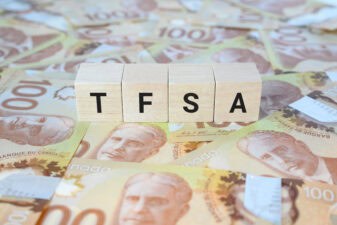Canadian bank stocks are attracting substantial negative attention. This sees them ranked as some of the most heavily shorted stocks on the TSX. Bank of Nova Scotia (TSX:BNS)(NYSE:BNS), known as Scotiabank, is the seventh most shorted stock on the TSX. The market is punishing Scotiabank, causing it to lose 31% for the year to date, the second-biggest loss among the Big Five banks. There are signs of worse ahead for Canada’s third-largest lender and most international bank.
Poor outlook for banks
Investors are viewing Canada’s most international bank so poorly for several reasons. Key is Scotiabank’s considerable exposure to Latin America; it’s been spending considerable capital on acquisitions in the region over the last decade. It is a top-10 ranked bank by assets in Mexico, Colombia, Chile and Peru, which form a trade group known as the Pacific Alliance.
While that was touted as a powerful growth lever for Scotiabank, it is a liability in the post-coronavirus economy. International banking was responsible for 41% of Scotiabank’s net income for fiscal 2019 compared to 25% in 2014. The Pacific Alliance nations of Colombia, Peru, and Chile are important profit centres, because lower expenses and higher official interest rates bolstered Scotiabank’s margins in those countries. The net interest margin for Scotiabank’s international banking business averaged an impressive 4.43% during 2019, or almost double the 2.47% reported by its Canadian banking division.
Weak economies in Latin America
Scotiabank is particularly vulnerable to any economic downturn in Latin America. A combination of inadequate testing, weak health infrastructure, and political ineptitude saw many Latin American countries mount insufficient responses to the pandemic. This increased their vulnerability to the economic fallout triggered by the coronavirus, particularly in Colombia and Peru, which shuttered all non-essential economic sectors as compulsory lockdowns to contain the virus.
Consequently, the economic impact in Latin America will be severe. The IMF forecasts Mexico’s gross domestic production (GDP) will shrink 6.6% during 2020. The fund believes that Peru and Chile will experience a 4.5% decline and that Colombia’s economy will contract by 2.4%.
The economic fallout is being magnified by weaker commodity prices particularly for oil and base metals. Colombia, Peru, and Chile are caught in the extractive trap. They are highly dependent upon the production of commodities, notably oil and base metals, to drive economic growth. Among the hardest hit will be Colombia, where Scotiabank is the fifth-largest bank by assets, because crude makes up a third of exports by value. Peru and Chile are both highly dependent upon copper, which is their top export by value, and other base metals.
If commodity prices remain soft for a prolonged period, then GDP could contract by more than anticipated by the IMF. That will sharply impact demand for credit, deposit taking, and other earnings drivers for Scotiabank’s regional operations.
Those economies also lack the policy, monetary and fiscal levers of developed nations. The economic fallout from the coronavirus on Latin America could be deeper and last longer than predicted. Aside from sharply diminished growth, the poor economic outlook will trigger a marked increase in impaired loans, credit defaults, and lending loss provisions. That will further impact Scotiabank’s results and lead to a weaker balance sheet.
Looking ahead
The latest events couldn’t have come at a worst time for Canadian banks. Risk of a domestic housing bust and sharp economic contraction are weighing heavily on the big banks. Emerging economic vulnerabilities in Latin America will magnify those headwinds for Scotiabank. A sharp earnings decline could force Scotiabank to cut its dividend, which, after being hiked for the last nine years, is yielding a very juicy 7%. That is a high yield for a major bank, and a low 52% payout ratio may not be enough to save it in the current harsh operating environment.
Recent U.S. bank earnings, which plummeted by half or more, indicate that there is a coronavirus earnings rough patch ahead for Canada’s banks. A combination of weak earnings, rising loan delinquencies, and increased lending loss provisions make it possible that Scotiabank’s earnings could plunge 50% or even more. A sharp dip in earnings will force Scotiabank to slash its dividend.
 Spring Sale
Spring Sale







